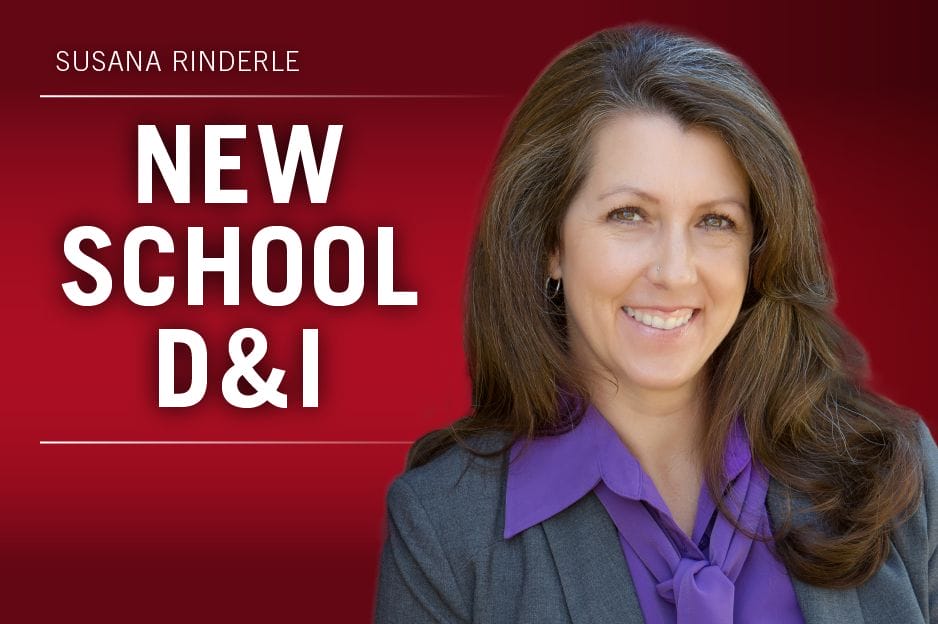 I’m not one for contemplating the big questions. You know: Why are we here? Does God exist? What’s the meaning of life?
I’m not one for contemplating the big questions. You know: Why are we here? Does God exist? What’s the meaning of life?
I disdained philosophy in college. I had a headache the entire class because my eyes were constantly rolling, and no question ever seemed to have an answer.
I’m big on answers: We’re here because we are. Now live it up until you’re not. God exists if you want him to. If you don’t, he won’t. And the meaning of life? That’s up to you. We have these wonderful things called free will and choice with which to craft if not the life of our dreams, at least lives we can be proud of.
But I often ask myself one big question: Why are people so resistant to diversity?
Off the top of my head I can come up with a half dozen really great answers: history, social conditioning, life experiences, diversity fatigue, the need for power — that’s a personal favorite — and the winner of this motley group of diversity blockers, fear.
Fear.
It makes sense. The sexist remarks, the refusal to consider minorities for leadership positions, the unreal, almost determinedly blind lack of response to incidents of racism, discrimination and inequality in the workplace — and everywhere else — the insistence that very real experiences for some are not real at all, or because of who these realities occur to they are not worth acting upon or even considering, it all screams — to me — I’m scared of you. I think you could take my job and surpass me. Therefore, I’m going to shut you down by fair means or foul.
Of course, everyone who throws up a workplace road block for a woman, a disabled person, someone of color or someone who is LGBTQ, isn’t motivated by fear. Just like every white man isn’t racist, and every black woman isn’t angry, and every gay man or transgender woman isn’t secretly trying to convert the world to their way of life — that’s not actually a thing, by the way. But I’d venture to say — with absolutely no real way to prove this — that most of the artificial barriers minorities face in the workplace are generated and/or motivated by fear.
And in a business context, that leaders allow fear to dictate policy and procedure, that baffles me.
You don’t have to be a genius to look at the numbers, or the dollars. Diversity makes money — period. It helps businesses reach customers, innovate new products and services to sell, diversity can help companies reach new or untapped audiences with huge pots of discretionary/disposable income. It helps plump up talent pipelines, guide talent management efforts, produce better internal and external business outcomes. Diversity can facilitate more effective and results oriented collaboration, and in many situations it can mitigate risk.
There’s so much data floating around that proves diversity is good for business on multiple fronts. I just read an excellent piece from Tech Crunch on the competitive advantages diversity can bring. It was chock full of data points, many I’ve seen in myriad studies, on websites and in speeches. For instance:
“A 2015 McKinsey study found ethnically diverse companies were more than 35 percent more likely to outperform their industry counterparts. Even more significantly, each 10 percent increase in racial and ethnic diversity on the senior executive team yielded on average a rise of 0.8 percent in earnings before interest and taxes (EBIT).”
That’s real money directly attributable to diversity.
Or, check out these data points from the same article:
“ … a Credit Suisse study found that companies with higher female representation at the board level or in top management exhibit higher returns on equity, higher valuations and also higher payout ratios. Dow Jones studied more than 20,000 venture-backed companies over a five-year period and found that those companies with at least one woman executive were more likely to succeed than those with only men in leadership positions.”
That snippet didn’t throw around any hard or exact figures, but higher returns on equity, higher valuations and higher payout ratios, success in business, those word combos equal cash, kids. Bucks, dinero, moola, loot. And if we’re not just talking about dollars and sense in the marketplace, diversity also generates goodwill, brand equity, customer loyalty. And guess what? All of those things generate cash too.
So, I ask all of you discerning business professionals out there, if there’s a proven way to ensure that your efforts at work mean your company will make more money and solidify its place as a leader in the global marketplace, why wouldn’t you take it?
Fear.
Here’s another question for you: If you are scared of someone who’s different — and fear manifests in many different ways: aggression, distance, hyper-sensitivity, etc. — what are you really scared of? Of giving someone unproven a chance? Don’t be. Someone gave you a chance when you were new and untried. They mentored and nurtured and helped you learn from your mistakes, and you turned out great.
Are you scared a minority will eclipse you? Hence, you feel it’s in your best interest to keep a lid on your professional competition? Don’t be silly. Insecurity is weakness.
Be the guy or the girl who had the brains to prepare and package potential greatness, and unleash it on the competition. Be the leader who develops other leaders no matter what they look like or where they come from. Be the manager who ignores petty, temporary discomfort in favor of getting the job done, and done well, by using every available talent resource. Be the person responsible for developing the woman, gay man or whoever it is who shows that they want to take the bit between their teeth and run with it, and let the company reap the benefits.
Leaders who embrace diversity, who welcome it – despite any discomfort or unknowns — who enable it and measure it, they rarely regret it. These people aren’t necessarily fearless. They may still have valid questions and concerns.
But they’re willing to ask the tough questions, to challenge the status quo, to resist what that Tech Crunch article so eloquently called “a natural tendency toward sameness” that “has become a liability in today’s marketplace.” Leaders who understand the value of diversity are willing to use natural fear not to stall but to invigorate workforce productivity and effectiveness, to build fabulous cultures that talent queue up to join, and ultimately to knock those bottom line figures out of the park.
I ran across an Insta post on Scandal actor Tony Goldwyn’s account a few weeks ago. He was acknowledging Women’s Equality Day, and it reads: The rise of women does not mean the fall of men.
Allowing others who are different to step up to the plate or sit down at the table doesn’t mean those who are already in play will lose their place. Some may. No lie. I know it. There aren’t infinite slots at the top or unlimited corner offices. It’s natural that some rise and some fall based on talent, opportunity, work ethic. There are any number of variables that determine who is a success and who is a failure in the business world. But will you cheat to maintain your position, your corner office?
I have one more question for leaders: Are you scared to compete?
Kellye Whitney is the associate editorial director for Workforce. Comment below or email editors@workforce.com.










